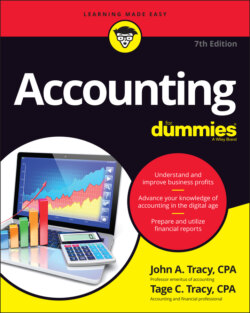Читать книгу Accounting For Dummies - John A. Tracy - Страница 30
Reporting cash flows and changes in owners’ equity
ОглавлениеCash is king, as business managers and investors will tell you. More than a quarter of a century ago, the rule-making authority in financial accounting said a business should report a statement of cash flows to supplement the income statement and balance sheet. This financial statement summarizes the business’s cash inflows and outflows during the period.
A highlight of this statement is the cash increase or decrease from profit (or loss) for the period. This key amount in the cash flow statement is called cash flow from operating activities. We explain the statement of cash flows in Chapters 2 and 8. Be warned early on that many argue that this cash flow figure is more important than bottom-line profit for the period. Well, we’ll see about that!
It becomes clear throughout this book that we harp on and emphasize the importance of the statement of cash flows because it offers critical financial information about how a business generates and consumes cash. What we have found over our vast experience is that while most parties (internal and external — both are equally guilty) jump right to the income statement to identify the growth in top-line sales revenue or how much bottom-line profit was generated, or focus on the balance sheet to evaluate the company’s financial strength, the statement of cash flows tends to get passed over relatively quickly. Why? you may ask. It usually comes down to either the party being lazy, having a lack of understanding (as to the purpose of this statement), or believing that the statement of cash flows is overly complex and is not particularly important. All are poor excuses because, in order to truly understand accounting and a company’s financial statements, the statement of cash flows should never be overlooked!
Also, it’s common for many businesses to include a summary of changes in their owners’ equity accounts during the year. Typically it’s called a statement of changes in stockholders’ equity. We could argue that it’s not a full-fledged financial statement, but there’s little point in arguing semantics here — although the other three financial statements (balance sheet, income statement, and cash flows statement) are “full-size” statements. Larger, public corporations are required to present this statement, whereas smaller, private businesses have more leeway in deciding whether to include such a summary. We explain the statement of changes in stockholders’ equity in Chapter 2.
